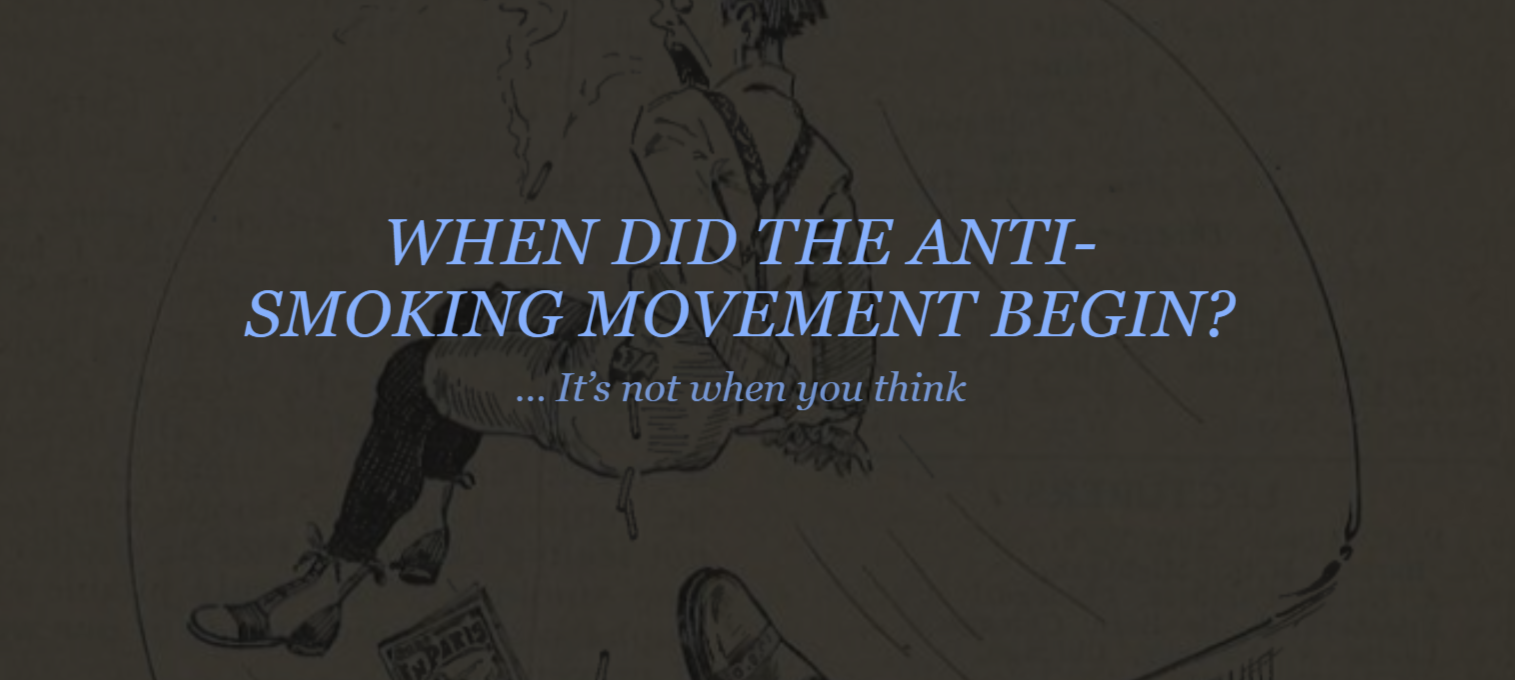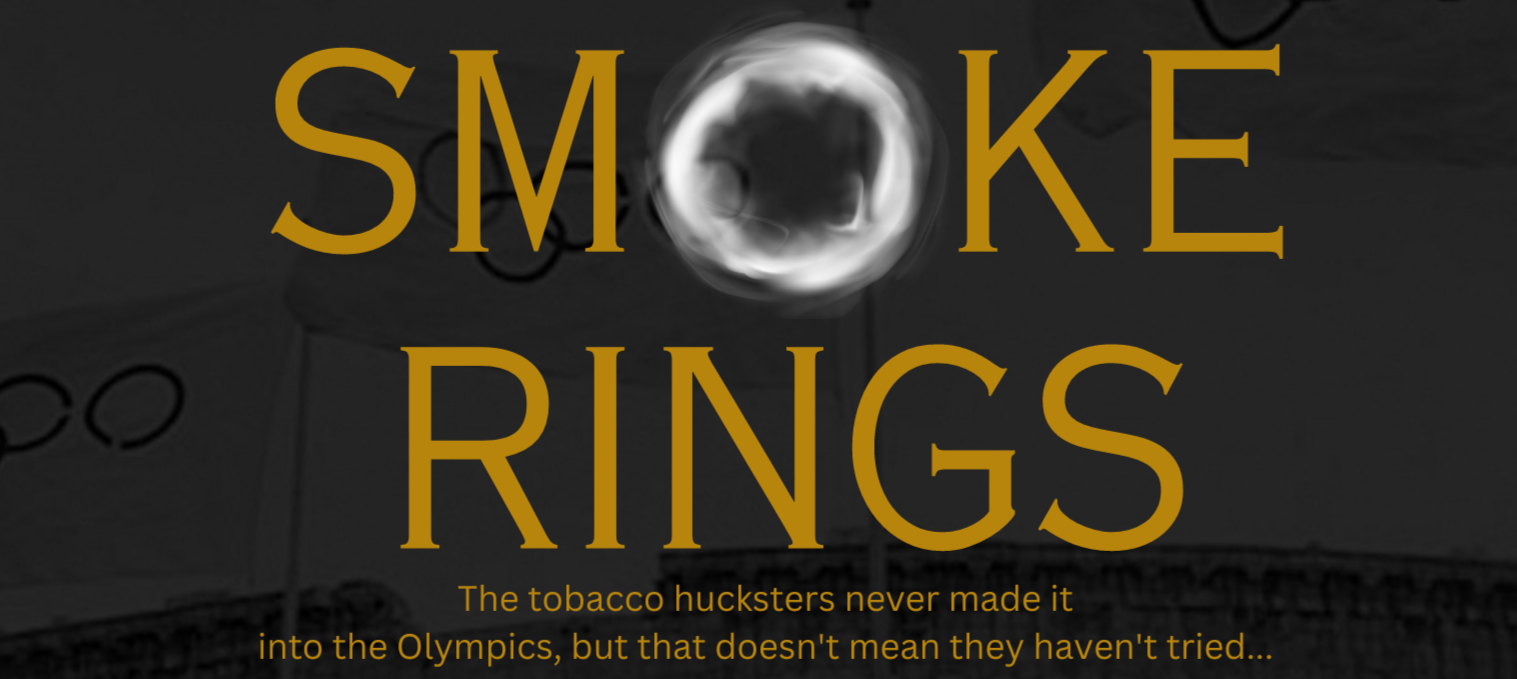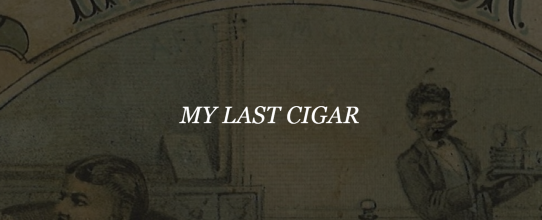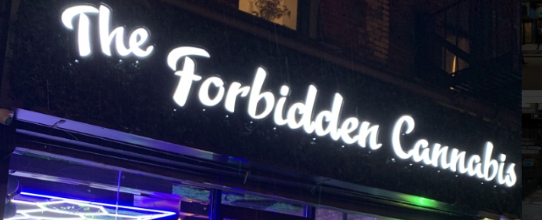“Merry X-Ray and a Happy New Lung: When Santa Sold Cigarettes”
(Museum version, 2001; online version published 2012; revised and expanded version,
December 19, 2025)
This exhibition features examples of the Center’s magazine advertisements, TV and radio commercials, postcards, mailings, and point-of-purchase promotions in which Christmas became synonymous with smoking. The title was inspired by the Australian health activist group B.U.G.A. U.P. (Billboard Utilising Graffitists Against Unhealthy Promotions), which galvanized public attention in the 1980s through satirical refacing of outdoor advertising messages for cigarettes, alcohol, and other harmful products.
Thanksgiving Special
(September 6, 2024; revised and expanded version,
November 21, 2025)
In 1900, cigarettes comprised less than 2% of tobacco product sales, but they would be popularized in World War I through free distribution by health charities to the boys in the trenches. On the home front, where meat and wheat were in short supply due to the needs of the military, The American Tobacco Company created a patriotic advertising campaign to encourage consumption of other fresh and delicious foods – like poached eggs on toast – likening them to the pleasures of a “toasted” Lucky Strike cigarette. Every major tobacco company would craft ad campaigns that associated cigarette smoking with food. In the 1930s R.J. Reynolds Tobacco Company’s advertisements for Camels featured elegantly dressed men and women of high society dining and smoking in America’s finest restaurants. The P. Lorillard Tobacco Company likened gourmet foods to Old Gold cigarettes in the 1930s and to Kent cigarettes in the 1980s. In the 1950s, The American Tobacco Company hired famed Disney artist Mary Blair to design a series of Pall Mall cigarette ads that associated the brand with fresh fruit, lobster, shrimp, and other delicacies. The culmination of the intermingling of cigarettes and food came in the late-1970s to the late-1980s with the acquisition of major food companies by Philip Morris and R.J. Reynolds to burnish their nicotine-stained image.
Exhibitions, 2023 – 2025
(Original version, 2019; revised and updated version, October 1, 2025)
In the 21st century, the increase in melanoma, the deadliest form of skin cancer, has paralleled the dramatic rise in tanning bed use, not unlike the frightening rise in lung cancer in the 20th century as cigarette smoking increased. This exhibition presents a historical overview of the use and promotion of sunlamps and tanning beds, which the American Cancer Society and the American Academy of Dermatology have been unsuccessful in discouraging Gen Z from using.
August 1, 2025
Upon the retirement in 1967 of tobacco industry nemesis Senator Maurine Neuberger, New York Senator Robert F. Kennedy took over the fight against cigarette smoking and its promotion, introducing the toughest bills to that time aimed at restricting cigarette advertising and improving ways to educate the public about the harmfulness of smoking. This was all the more remarkable because New York was the home of the three major TV networks, several of the nation’s most influential newspapers, and most of the tobacco industry’s advertising agencies and public relations firms. Kennedy was the logical choice to deliver the opening plenary address at the First World Conference on Smoking and Health in New York City on September 11, 1967. He continued to make curbing the ravages of smoking one of his top issues — striking fear in the hearts of tobacco industry executives — until his assassination on June 6, 1968 after winning the Democratic presidential primary in California.
“Diabetic Bread, Goat Milk Formula, Soda, Sun Lamps, and Cigarettes”
June 27, 2025
This exhibition features more than 300 advertisements that were published in the Journal of the American Medical Association (JAMA) from its inception in 1883 to the 1950s, as well as ads from The New England Journal of Medicine (NEJM) and other journals, for products whose manufacturers sought to influence physicians’ prescribing practices. But in addition to ads for drugs and medical devices, many of which are long forgotten, JAMA — the most widely circulated medical journal of the era — accepted advertisements for a broad range of consumer products, including automobiles, infant formulas, sanitariums, shoes, cosmetics, vitamins, cereals, hotels, airlines, soda, fruit, eggs, meat, milk, and… alcohol and cigarettes.
By the late-1920s, as cigarette smoking was dramatically increasing among men and women — including physicians, cigarette advertisements were appearing in most issues of JAMA (and in The Lancet and the British Medical Journal in the United Kingdom), in spite of the growing evidence that smoking caused lung cancer. For more than 25 years until 1954, JAMA accepted cigarette advertisements that touted reduced risks to health and encouraged physicians to smoke certain brands and recommend them to their patients.
“Universities and Tobacco: The Ties that Blind”
April 5, 2025
Although more than 2,500 colleges and universities in the United States have become smoke free campuses over the past 20 years (including nearly 2,200 that claim to have adopted entirely tobacco-free policies, according to Americans for Nonsmokers’ Rights), progress in reducing cigarette, smokeless tobacco, and hookah use among U.S. university students has slowed. Prevalence may be as high as 25%. Globally, reported smoking prevalence among university students ranges from 14% in Brazil to 60% in Bangladesh. Coordinated strategies to diminish the influence of the tobacco industry in academia are lagging and require greater attention by tobacco control proponents. This illustrated exhibition explores the history of smoking on college campuses and efforts to end it. A little-studied obstacle to reducing tobacco use among university students and to exercising leadership in public health has been the financial relationships between the tobacco industry and academia, such as the presence of cigarette manufacturers at campus job fairs and investments in tobacco companies by university endowments.
“Eight Hospital Ashtrays: A History of Hospitals and Smoking”
(Original version published August 2020; Updated and expanded August 2025)
For nearly three decades following the publication of the landmark Surgeon General’s report on smoking and health in 1964, hospital administrators, medical staffs, and the American Hospital Association itself all dragged their feet in prohibiting smoking in health care facilities. Even after Congress banned smoking on airlines in 1988 and after many major cities passed clean indoor air laws restricting smoking in public places, few hospitals discouraged patients, visitors, medical personnel, and other employees from smoking. In 1991 The Joint Commission on Accreditation of Healthcare Organizations (JCAHO) mandated that hospitals be smoke-free by December 31, 1993…with exceptions for patients whose physicians wrote a note in the chart permitting it. This exhibition presents examples of artifacts and images of a hopefully bygone era.
February 2025
Giving roses, chocolate. and a card to your sweetheart on Valentine’s Day is a cherished tradition. Some tobacco companies thought a carton of cigarettes might be nice, too. Just don’t forget the smoker’s breath spray, teeth-whitener, odor remover…and a chest X-ray.
“A Vote for Cancer:
Tobacco Advertising and Presidential Elections”
October 25, 2024
Tobacco was America’s first cash crop and a mainstay of the US economy for 300 years. So it’s no surprise that manufacturers of cigars, chewing tobacco, and cigarettes have had a presence in presidential and other electoral campaigns since the mid-19th century when lithographed cigar box labels let Americans see likenesses of presidential candidates in color for the first time. Presidential campaign buttons appeared in 1896 — given away by Liggett & Myers Tobacco Company to promote its Sweet Caporals cigarettes. For most of the 20th century, cigarette makers created advertisements with election themes and distributed campaign buttons, election information booklets, and even free packs of cigarettes with the images of presidential candidates. By the late-1990s, the combination of restrictions on cigarette advertising and the approval of political action committees by Congress enabled cigarette makers to donate directly to Presidential candidates and lessened the need for cigarette product advertising. This exhibition features examples of tobacco advertisements and promotional artifacts from Presidential election campaigns.
“Depictions of Smoking In Pharmaceutical Advertising”
(Original version published October 2021; updated and expanded November 1, 2024)
Pharmaceutical manufacturers have long employed stereotypical images of inveterate smokers in advertisements for prescription medications in medical journals. Physicians and other clinicians have thus been cued not to talk with the patient about stopping smoking — which could reduce the need for medications, but rather to prescribe an additional medication, often to treat an adverse effect of smoking. But everyone “benefits”: the physician (who gets to bill for having prescribed a medication), the pharmacist (for filling the prescription), the patient (for being given a purported cure), the medical journal (for the advertising revenue), the advertising agency, and most of all the pharmaceutical company. Because it usually takes many attempts to stop smoking, tobacco companies and retailers also continue to benefit when patients relapse.
This exhibition features examples of prescription drug advertisements in medical journals with stereotypical images of smokers. Not included are the many Chantix and Nicorette advertisements on TV and in both the medical and lay press, because this brings up a different can of worms: the exaggerated claim that one needs a medication in order to stop smoking. Or as Mark Twain said, “Giving up smoking is the easiest thing in the world. I know because I’ve done it thousands of times.”
“When did the Anti-Smoking Movement Begin?”
September 20, 2024
“The tumult surrounding tobacco’s damaging effects did not spontaneously arise in twentieth-century America. Contrary to the opinion of some, an anti-tobacco movement existed during the period of 1800 to 1870, with the first organized actions beginning in the 1830s, during a time of heightened reform activism in the United States. Periodical literature in that era contained numerous attacks on the pernicious weed. These reformers believed that there were agricultural, social, physical (health), and moral evils inherent in its production and use…” –Shane A. Smith, Ed.D.
“Smoke Rings: Tobacco and the Olympics”
July 26, 2024
Not long after the first modern Olympic Games in Athens in 1896, U.S. Olympic athletes were paid for endorsing brands of tobacco. By 1928, Helen Wainwright, who had won a silver medal in diving at age 14 at the 1920 Summer Olympics and a silver medal in swimming at the 1924 Summer Olympics, would appear in an advertisement for Lucky Strike cigarettes. In the 1930s, R.J. Reynolds Tobacco Company fielded a veritable team of men and women Olympic track and field athletes, swimmers, divers, skaters, and skiers to promote Camel cigarettes on radio and in magazines and the Sunday funnies. Other Olympians endorsed Camels well into the 1950s.
In January 1964, less than a month after the publication of the landmark report of the Surgeon General on smoking and health, Lorillard Tobacco Company’s Kent and Newport cigarettes sponsored the TV broadcasts of the Winter Olympic Games. In 1980 and 1984, the U.S. Winter Olympics Ski Team was sponsored by the United States Tobacco Company, maker of SKOAL and Copenhagen spitting tobacco. But in 1987, a campaign to ban smoking and tobacco advertising at the Olympic games, led by physician John Read, led to the Calgary Winter Olympic Games becoming the first smoke-free Olympics. Since then, every Summer and Winter Olympic Games has adopted a smoke-free policy – and a completely tobacco-free policy since 2010.
“The Life Insurance Industry’s Long, Strange Silence about Smoking and Cancer”
July 8, 2024
From the mid-1920s to the early-1960s, the Metropolitan Life Insurance Company conducted a major advertising campaign in popular magazines to educate the public about preventing or reducing the risk for cancer and many other diseases. Yet despite the growing evidence that cigarette smoking was a principal cause of lung cancer — and actuarial evidence of a significant difference in longevity between smokers and non-smokers — there was no mention of smoking in any of the company’s messages about cancer. Not until after publication of the Surgeon General’s Report on smoking and health in January 1964 did the insurance industry offer an incentive to lower the cost of life insurance premiums, led by State Mutual of Massachusetts, which was the first company to promote a nationwide non-smoker’s discount. This exhibition features advertisements and pamphlets by the Metropolitan Life Insurance Company and pioneering promotions by State Mutual.
“Jimmy Carter: Pro-Tobacco President, Anti-Smoking Ex-President”
May 24, 2024
On the subject of smoking, President Jimmy Carter was a paradox. Two of his best appointments were Joseph Califano, Jr., a former aide to President Lyndon Johnson, as Secretary of Health, Education and Welfare (HEW) and Harvard pediatrician Dr. Julius Richmond as Surgeon General and Assistant HEW Secretary. Ultimately, though, President Carter’s major contribution to anti-smoking efforts was his firing of Califano for having launched a ferderal anti-smoking campaign that incurred the wrath of voters in tobacco-growing states. The hostile reaction attracted greater ovrerall support for curbing tobacco use and promotion.
In September 1985, nearly five years after leaving office, former President Carter convened a conflict resolution retreat on the tobacco issue at Calloway Gardens, Georgia, patterned after his Camp David meetings to forge a peace accord in the Middle East. This exhibition features documents from the three-day conflict resolution retreat at Calloway Gardens. Participants ultimately agreed on two main points: that the tobacco farmer wasn’t the main obstacle to curbing teen smoking — the cigarette manufacturers were — and that America’s adolescents needed stronger education on the harmfulness of smoking. The symposium had two significant outcomes: first, it led to a compromise between the smokeless tobacco industry and health advocates to jointly support legislation that became the Smokeless Tobacco Act of 1986; second, the symposium proved to be the model later used by the Carter Center to address international conflicts.
“Part 1: Health Care Hypocrites: SIEMENS”
“Part 2: Other Sick Bedfellows of the Tobacco Industry”
April 8, 2024
Woven throughout the exhibitions of the Center for the Study of Tobacco and Society are examples of the tobacco industry’s “sick bedfellows” — corporations, academic institutions, and health-related organizations, both private and public, that have aided the manufacture, marketing, or sale of cigarettes, or that have supported investment in the tobacco industry or otherwise helped burnish cigarette makers’ public image. These include pharmaceutical companies, universities, media corporations, arts and cultural groups, sports leagues, political parties, and even medical societies.
“Health Care Hypocrites, Part I” focuses on SIEMENS, the global engineering conglomerate that is a leading innovator in health care technology…and cigarette manufacturing. Part II of this exhibition features examples of other companies and institutions that have projected a health-conscious image even as they forged close ties with the tobacco industry, many to the present day.
“Tobacco and the Tabloids: ‘TRICK CIGAR BLOWS MAN’S HEAD OFF!’”
March 29, 2024
This exhibition is drawn from the Center’s collection of supermarket tabloid newspapers with stories about smoking in the 40 years following the 1964 publication of the Surgeon General’s report on smoking and health. With their provocative headlines, eye-catching photos, and brief stories compared to other popular magazines, the WEEKLY WORLD NEWS and the NATIONAL ENQUIRER could have had a life-saving role in educating the public about the devastating health consequences of cigarette smoking. Instead, they just played it for laughs.
“The First Medical Journal Theme Issues on Smoking”
February 14, 2024
This exhibition is comprised of items related to Dr. Alan Blum’s editorship of the Medical Journal of Australia (1982-1983) and the New York State Journal of Medicine (1983-1985), during which he produced the first three theme issues at any medical journal about the world cigarette pandemic. The exhibition features complete scanned copies of the three issues, the letters to the editor and news media coverage in response to the issues, and a video interview about the obstacles encountered in producing the issues during an era of foot-dragging by organized medicine, academia, the mass media, and the public health community alike, fearful of attacking the politically and economically powerful tobacco industry.
“Blowing Smoke: The Lost Legacy of the Surgeon General’s Report on Smoking and Health”
January 11, 2024
This exhibition commemorates — but does not celebrate — the 60th anniversary of the publication of Smoking and Health: Report of the Advisory Committee to the Surgeon General of the Public Health Service, better known as the Surgeon General’s Report. Drawn almost entirely from the Center’s collection, the exhibition reviews the Report’s origins and the reactions to its release by the mass media, organized medicine, and the tobacco industry. “The Lost Legacy…” offers sobering lessons about the failure of government, academia, foundations, and health organizations alike — to the present day — to overcome their addiction to money for endless research instead of taking direct action to reduce demand for cigarettes — a strategy set in motion in 1954 by the tobacco industry itself when it created the Tobacco Industry Research Committee, which offered lucrative employment for scientists willing cast doubt on the growing evidence of cigarette smoking as a major cause of death and disease.
The beguiling story of the most popular American college song of the late-19th century
(December 10, 2023)
This exhibition originated with an intriguing article from 1888 in a book in the Center’s library — a volume of TOBACCO, a weekly British tobacco trade publication. The article was about a song, “My Last Cigar,” whose popularity was exceeded at the time only by “Home Sweet Home” but whose author never received any royalties. In 2019 Presbyterian pastor the Reverend Dr. Daniel Morrison, a member of Rascals, Rogues, and Rapscallions, a fraternal society of intellectually curious individuals dedicated to discovering “the extraordinary in the ordinary, the heroic in the mundane, and the historic in the forgotten,” set out to find the elusive author of America’s once second favorite song. He shares his findings in this exhibition, which also features a gallery of over-the-top cigar advertisements from the Center’s collection.
“Mild As May, with Red Tips for Your Pretty Lips”
How Tobacco Companies Sold Women a Pack of Lies
(November 1, 2023)
This exhibition traces the history — and the tragic legacy — of efforts by the tobacco industry throughout the 20th century to encourage women to smoke cigarettes. By the early 1900s, cigarette smoking had gained a foothold among American men, who still preferred cigars. The potential of widespread adoption of cigarette smoking by women led the growing temperance movement to spread fear that this would undermine family values and the moral fabric of society. Yet by the 1930s cigarette advertisers had given women their equal smoking rights, and by World War II one third of American women smoked cigarettes. By 1986, deaths from lung cancer in women had surpassed those of breast cancer, and by the early-2000s more cases of lung cancer were being diagnosed in women than in men.
“Covering Cancer? How Magazines Promoted Cancer Research…and Cigarettes”
(Original version published 2022; expanded 2023, 2024)
“Larry Flynt Strikes Back at Cigarette Advertisers”
Communicating information through the mass media about ways to prevent, diagnose, and treat cancer is essential to improving the nation’s health. Yet throughout the 20th century, tobacco companies were among the top advertisers in the most widely read news magazines. This made for many ironic juxtapositions of front cover stories on cancer and back cover cigarette advertisements. This exhibition presents examples of such two-faced coverage from the Center’s collection.
“Coronations, Cigarette Companies, and Cancer”
(May 1, 2023)
Consider the devastating reality of smoking not just on the United Kingdom—cigarettes are still the nation’s leading preventable cause of death in 2023, killing 76,000 a year—but also on the royal family: Queen Elizabeth’s father, George VI, was just 52 when he died from lung cancer. Charles’ father, George V, and grandfather, Edward VII, also died of smoking-related diseases, as did his granduncle Edward VIII, the Duke of Windsor. Queen Elizabeth’s sister, Princess Margaret, who smoked heavily, died at 71 from severe lung and heart disease…Doubtless mindful of the devastating toll taken by smoking on his own family, Prince Charles became an outspoken anti-smoking advocate… The public would be wise to follow the example of Charles III by not having anything to do with tobacco companies or their new products. God save the King.
(June 15, 2023)
Throughout the 20th century and to the present day, millions of fathers have died from heart disease, emphysema, and lung cancer due to smoking, even as the tobacco industry denied that cigarettes could even cause a cough. Meanwhile, cigarettes were advertised on billboards in almost every sports arena and stadium, as well as day and night on TV and radio until banned from the airwaves in 1971, and from then increasingly in newspapers and magazines and at entertainment venues.
Whether in the form of cigarettes, cigars, or spitting tobacco, nicotine is a frequently fatal addiction that the tobacco industry has always downplayed. As if we hadn’t learned the lessons of history, today e-cigarette makers are reeling in a new generation of addicts under the guise that these devices may be safer than cigarettes. Notice that these companies haven’t pulled a single pack of their cigarette brands off the shelves. This is an industry that desperately wants to keep us hooked on nicotine in any form, because it is hooked on making money by addicting others.
(July 1, 2023)
An extraordinary, possibly one-of-a-kind 114-page flip book of several different Camel cigarette advertisements translated into 29 languages for placement in ethnic-language newspapers in New York City. Introduced in 1913, Camel was the first popular national cigarette, and by 1915 it had become the top-selling brand. Its main competitors were the American Tobacco Company’s Lucky Strike (a brand introduced in 1871) and Liggett & Myers Tobacco Company’s Chesterfield (1873).
“A New Cigarette Filter…made of asbestos”
(March 14, 2023)
In 1952, using the popular new medium of television, the P. Lorillard Co. sponsored “scientific” demonstrations to show the efficacy and implied health benefits of its KENT Micronite filter. The campaign also featured advertisements in medical journals. Although the ads did not disclose the composition of “Micronite,” the material that Lorillard touted as “so safe, so effective it has been selected to help filter the air in hospital operating rooms” and that was used “to purify the air in atomic energy plants of microscopic impurities” was asbestos.
(February 15, 2023)
New York City, where former Mayor Bloomberg led efforts to pass the nation’s strictest clean indoor air laws, highest cigarette taxes, and most stringent limitations on retail signage for tobacco products, has been transformed into a marijuana paradise. The corner candy stores and newsstands of my youth have been replaced by weed shops.
Exhibitions, 1988 – 2022
(Museum version, 2004; online version published 2022, updated 2023)
This exhibition retraces the battles over smoking in the nearly 60 years since the Surgeon General’s report, as seen through the eyes of the nation’s newspaper editorial cartoonists. The exhibition evolved from a research poster at the 10th World Conference on Tobacco or Health in Beijing, August 24-28, 1997 and an invited presentation in Toronto on June 29, 2001, at the combined conventions of the Association of American Editorial Cartoonists (AAEC) and the Association of Canadian Cartoonists. Leaders of the AAEC encouraged the creation an exhibition, which debuted at the association’s 2004 convention in Lexington, Kentucky and traveled to eight other cities over the next four years. The exhibition featured original artworks of more than 80 editorial cartoonists and the headlines that inspired the trenchant cartoons. From 2020 to 2022, the exhibition was digitized, updated, and expanded to include over 100 artists.
“‘Tobacco Heart!’: Cigarette Smoking and Cardiovascular Health”
(November 2022)
Although most adults and adolescents know that smoking can cause lung cancer, most are not aware that cigarettes take an even greater toll on the heart. This exhibition looks at what government health agencies, medical schools, medical societies, the mass media, health organizations, drug companies, and pharmacy chains have done—and have not done—to reduce the devastating cardiovascular consequences of cigarette smoking.
(2022)
This single-item exhibition spotlights the oldest item in the Center’s collection. Read and hear what the first newspaper advice columnist, John Dunton, had to say about the health effects of smoking…in 1691
(2021)
This exhibition features stories of tragedy and regret of nine ordinary men and women who were models in cigarette ads….and two celebrities dying from lung cancer who appeared in anti-smoking TV commercials.
“Sports + Cigarettes = A Losing Team”
(2020)
From the diamond to the gridiron, tobacco companies invested heavily throughout the 20th century to associate cigarettes, cigars, and smokeless tobacco with athletic prowess, as illustrated in these sport-by-sport exhibitions based on items from the Tobacco Industry Sponsorship of Sports Collection of the Center for the Study of Tobacco and Society.
(2020)
This exhibition is drawn entirely from the Center’s Children and Tobacco Collection, which consists of candy cigarette, cigar, and chewing tobacco products sold in candy stores the world over throughout the 20th century. The exhibition also highlights examples of cigarette marketing aimed at teenagers and children. For instance, in the 1980s video game arcades featured Pole Position and Super Monaco GP, popular auto racing games with real cigarette brand logos on the racecars. This exhibition fncludes an interview with Dr. Rick Richards, who was instrumental in getting these logos out of video games.
“Museum Malignancy”: Tobacco Industry Sponsorship of the Arts
(2019)
Corporate sponsorship of dance troupes, opera companies, concert tours, film festivals, and art exhibitions at leading museums and libraries was pioneered in the 1950s by Philip Morris, maker of America’s top-selling cigarette, Marlboro, as a way to distract from the growing body of medical evidence of cigarette smoking’s deadly toll. This exhibition reveals the deep-seated addiction of leaders of art museums to money from cigarette makers…to the present day.
“Tennis, Tobacco and Virginia Slims”
(2021)
Created in 1970 in response to the underpayment of women athletes, the Virginia Slims Tennis Circuit was also an opportunity for cigarette maker Philip Morris to promote a new brand aimed at the liberated woman. This exhibition traces the use of tennis in cigarette marketing and the efforts by Doctors Ought to Care and other activist groups to throw tobacco out of sports.
“Silk Cut: Surrealism as Subversion”
(2019)
Aiming to reduce adolescents’ exposure to cigarette advertising, the British Parliament banned radio and TV tobacco commercials in 1965, and the United States Congress followed suit in 1969. in the United Kingdom in 1965 and in the US in 1969. But cigarette makers circumvented the restrictions by increasing cigarette ads in the print media and on billboards at sporting events, many of which were televised. Creativity in cigarette marketing reached its zenith in the 1980s when advertising agency owner and art collector Charles Saatchi thought of an entirely new kind of campaign to promote the brand Silk Cut. Inspired by the slashed canvases and punctured metal sculptures of artist Lucio Fontana, the visual puns for the words “silk cut” made it the best-selling cigarette brand in the UK.
(2018)
In the latter half of the 20th century, New York City became the global headquarters of the tobacco industry and its allies. Led by Philip Morris, maker of the world’s best-selling cigarette, Marlboro, and by Loews, maker of the leading menthol brand, Newport, cigarette manufacturers wielded enormous influence among opinion leaders and the general public alike until well into the 2000s by means of extensive advertising in The New York Times, The Wall Street Journal, popular magazines, and ethnic newspapers; in theater, opera, and dance programs; on billboards in sports stadiums; on the largest billboards in Times Square and throughout the city; on the city’s buses, subways, and taxis; and in countless bodegas, newsstands, candy stores, bars, supermarkets, and pharmacies. This exhibition explores the outsized influence of the tobacco industry in New York City and the hard-fought battles of the 1990s and 2000s to pass clean indoor air laws and restrictions on cigarette marketing.
“‘The Makin’s of a Nation’: Tobacco and World War I”
(2018)
“Keep ’em Smokin’: Tobacco and WWII”
(2023)
From 1914 to 1918, a global conflict involved more than 70 million soldiers and cost over 16 million lives. Tobacco also went to war, packed in every doughboy’s knapsack. Through patriotic advertising and the distribution of free cigarettes to soldiers by the Red Cross and other health organizations, cigarettes replaced cigars and chewing tobacco as young men’s favorite vice. This exhibition chronicles the use and promotion of tobacco products in World War I.
“Of Mice & Menthol: The Targeting of African Americans by the Tobacco Industry”
(2018)
By the 1960s, menthol cigarette brands were especially popular among African Americans, to whom they were heavily marketed. Three brands—Brown & Williamson’s KOOL, Lorillard’s Newport, and R.J. Reynolds’ Salem—made up the lion’s share of the market. Not a single advertisement for a non-menthol brand ever appeared in the leading African-American magazine EBONY, which never published an article on the leading preventable cause of death among African Americans: cigarette smoking.
Other marketing strategies included advertising on billboards, in minority newspapers, and on point-of-purchase signage in convenience stores and gas stations. Cultural events included the KOOL Jazz Festival and gospel and jazz concerts sonsored by Philip Morris’ Benson & Hedges cigarette brand. Philip Morris was a prominent sponsor of meetings of Black newspaper publishers, Black journalists, and the National Association for the Advancement of Colored People. This exhibition exposes the depth and breadth of the targeting of African Ameicans by the tobacco industry.
“Smoking in the Balcony Only: When Movie Stars Sold Cigarettes”
(Museum and library version, 2005; online version published 2018)
In the first two decades of the 20th century, cigarette smoking became one of the great unifying elements of society. Movies were becoming the top entertainment medium, and on the screen people from every walk of life were enjoying cigarettes. Tobacco companies soon enlisted the top movie stars of the day to endorse their cigarette brands. This exhibition, an online version of one that was presented at the BAMA Theatre in Tuscaloosa, Alabama, September 10-27, 2006, consists of advertisements from the collection of the Center for the Study of Tobacco and Society and an original film of smoking scenes in movies from the 1930s to the 1960s, “Puff Your Cares Away.”
“Confronting America’s Smoking Pandemic”: A Timeline in Four Parts
(2015-2016)
In 2014, The Cancer Network, online home of the journal ONCOLOGY, invited Alan Blum, MD to produce an illustrated history of efforts in the U.S. to counteract tobacco use, cigarette marketing, and the tobacco industry. The resulting timeline, nearly all of the illustrations in which are from the collection of the Center for the Study of Tobacco and Society, was published in four parts over two years.
“Stamping Out Smoking: Anti-Smoking Postage Stamps from Around the World”
(Museum version, 2010; online version published 2018)
This exhibition features more than 100 anti-smoking postage stamps issued by 65 countries from the collection of Dr. James Lutschg, which he donated to the University of Alabama Center for the Study of Tobacco and Society in 2009. The exhibition was originally displayed in 2010 at the medical libraries of the University of Alabama at Birmingham and the University of Buffalo as part of a national campaign for a U.S. postage stamp to commemorate the 50th anniversary of the publication on January 11, 1964 of the landmark U.S. Surgeon General’s Report on Smoking and Health by Alabamian Dr. Luther Terry.
“Your Drug Store and Cancer Center”
(2009)
After its debut in June, 2009 at the National Conference on Tobacco or Health in Phoenix, Arizona, this walk-through installation of a mock pharmacy was expanded for display at the Buffalo Museum of Science in Buffalo, New York in November, 2009. The drug store’s contents consist entirely of point-of-purchase cigarette promotions from the 1970s to the 1990s from an actual convenience store, The Nutmeg Shoppe, in Hartford, Connecticut.
“Up in Smoke: The Airline Flight Attendants’ Fight to End Smoking Aloft”
(Museum version, 2004; online version published 2022)
The Flight Attendant Medical Research Institute (FAMRI) was formed in 2000 as the result of the settlement of a class action lawsuit brought on behalf of non-smoking flight attendants by Florida attorneys Stanley and Susan Rosenblatt in October 1991 against cigarette manufacturers. The flight attendants sought damages for diseases caused by their long-term exposure to tobacco smoke in airline cabins. This exhibition features original advertisements and photographs depicting passengers smoking on airlines, newspaper and magazine articles, editorials and political cartoons.
“The Unfiltered Truth about Smoking: The American Medical Association Rewrites Tobacco History”
(Museum and library version, 1997; online version published 2019)
This exhibition explores the corrupting influence of cigarette advertising in the pages of the Journal of the American Medical Association from the early-1930s to the mid-1950s, as well as the decades-long complicity of the AMA with the tobacco industry–well into the 1980s–to ignore or deflect concerns over the adverse health consequences of cigarette smoking.
“When More Doctors Smoked Camels: Medical Claims in Cigarette Advertising, 1888-1988”
(Library version, 1988; online version published 2020)
“When ‘More Doctors Smoked Camels’: Medical Claims in Cigarette Advertisements, 1888-1988,” curated by Alan Blum, MD, was on view at the Jones Library [now the Texas Medical Center Library], Houston, Texas from November 1988 to February 1989. The exhibition takes its name from an RJ Reynolds Tobacco Company advertising campaign in newspapers and on radio from the late-1940s to the early-1950s: “More Doctors smoke Camels than any other cigarette.” The advertisements in this exhibition were selected from more than 1000 uncut magazines and medical journals collected by Doris and Alan Blum beginning in the late-1970s during his residency in family medicine at the University of Miami. Each advertisement reflects the irony of promoting cigarettes by using an appeal to health. Dr. Blum first wrote about medical claims in cigarette advertising in the Journal of the American Medical Association in 1980: Blum A: Medicine vs. Madison Avenue: Fighting smoke with smoke (commentary). JAMA. 1980;243:739-740.
[Note: With the advent of online collectibles websites in the late-1990s, substantially similar exhibits of acontextual old cigarette ads purchased by hobbyists on ebay have cropped up at the Lane Medical Library in 2007 and the Smithsonian National Museum of American History in 2019 (with a nearly identical title to the Texas Medical Center exhibition in 1988).]
Preview of exhibitions in progress…
“Here’s a Pack of Get-Well Wishes: Greeting Cards with Smoking Themes”
(To be updated 2026)
A Gallery of Anti-Smoking Posters from Around the World
(To be updated 2026)

“Smoking Cessation:
A Multi-Billion Dollar Business”
(Fall, 2026)
Contact
Alan Blum, M.D., Director
205-348-2886
ablum@ua.edu
© Copyright - The Center for the Study of Tobacco and Society
















































